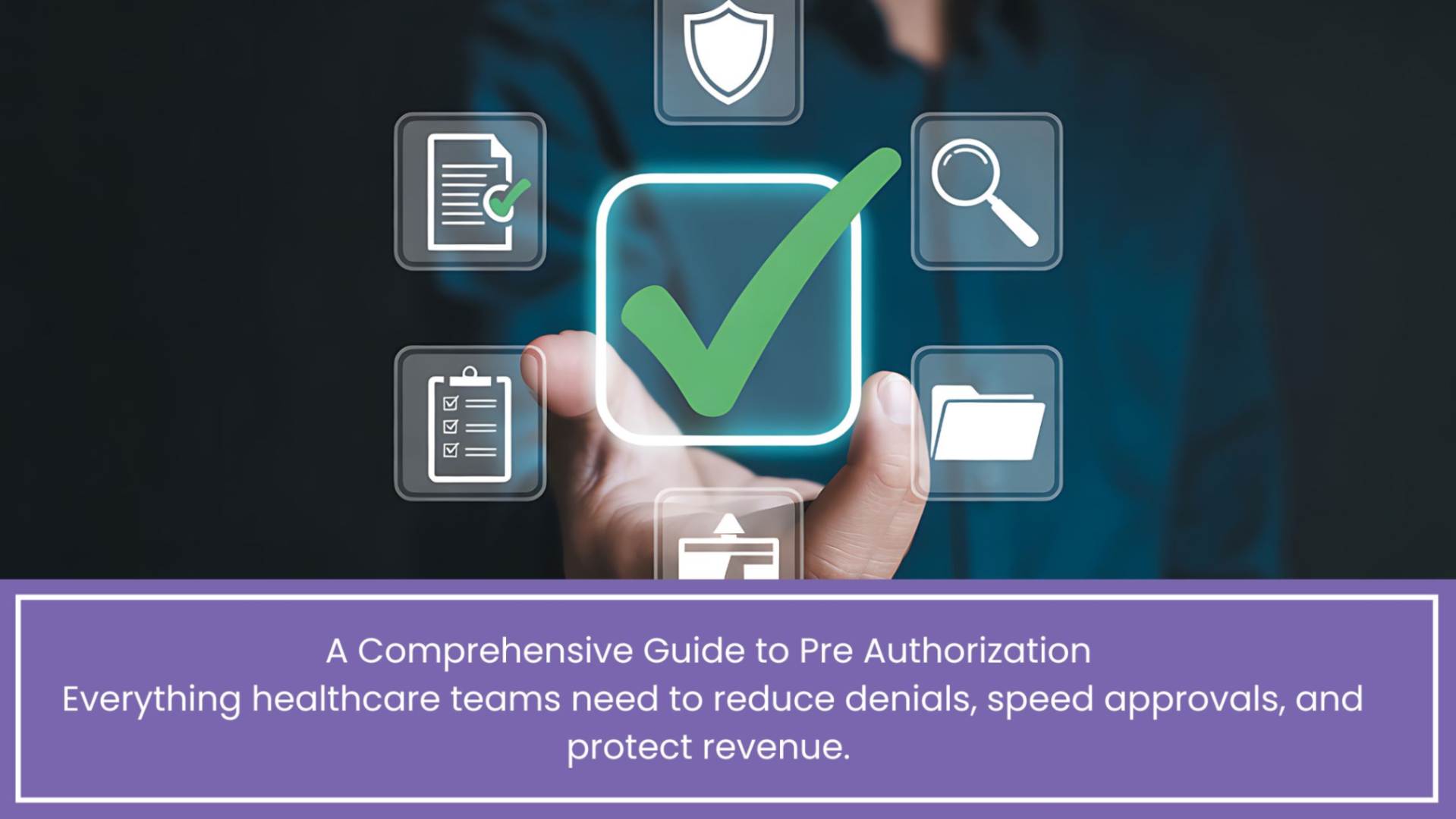Avoiding High-Risk Coding Errors to Ensure Proper Reimbursement
Avoiding High-Risk Coding Errors to Ensure Proper Reimbursement is essential for healthcare professionals, as mistakes in coding can cause financial and compliance challenges. Common errors like upcoding, undercoding, incorrect modifiers, and outdated codes often result in denials, delays, and revenue loss. With U.S. healthcare costs projected to reach $4.9 trillion, coding accuracy has never been more critical. This blog explores the significance of precise coding, the most common high-risk mistakes, current market trends, and proven best practices. Learn how to reduce errors, secure timely payments, stay compliant, and ensure accurate reimbursement for your practice.
Table of Contents
Typical Coding Mistakes That Affect Reimbursement
In healthcare, small coding oopsies can turn into big money woes. They can mess up your income, make claims get rejected, and even get you in trouble with the rules. When we’re talking about almost $4.9 trillion, you can’t let little errors mess with your cash flow. Getting the codes right is super important for getting paid.
This article will tell you why these mistakes happen, the usual suspects to look out for, the latest scoop on playing by the book, and how tech and smart moves are keeping offices on the right track.
Why Coding Accuracy Matters
Every medical action, such as a test or service, requires the correct code. This code helps insurance professionals decide whether to pay, hold, or deny the bill. Getting even one little number wrong can change everything.
Messy medical coding can lead to:
Bill rejection – Insurance companies don’t like it when codes don’t line up with the notes.
Longer time for money inflow — Wrong codes mean waiting longer for payment.
Troubles with the rules – Keep making mistakes, and you might get audited or fined.
Losing money – The AMA says U.S. health offices lose a big chunk of cash every year just because of these easy-to-avoid coding goofs.
So, getting coding right isn’t only about the Benjamins – it’s also about playing by the book, keeping trust, and working smoothly.
Common High-Risk Coding Errors
Let’s look at common coding mistakes that can lead to payment trouble:
- Upcoding – It’s like asking for more money than you should by using a code for a complex job when you did something simple. This can get you in hot water with the rules and the law.
- Undercoding – This is the flip side. You use a code that’s too low. It’s like giving your work away. You won’t get all the money you could, and it’s bad for your bottom line.
- Wrong Modifier Usage – These are tiny codes that pack a punch. Use them wrong, and your claims might get rejected or you might get paid less. For example, don’t mess up with modifier -25 or you might get in trouble with the folks who pay the bills.
- Unbundling – Imagine billing for a TV and its remote separately. That’s what it’s like when you bill for things that should be a package deal. It makes extra work and can make insurers suspicious.
- Match Your Billing to the Diagnosis – When the diagnosis and the procedure on the bill don’t match up, it’s a no-go. Think of it like trying to sell a car without showing it’s roadworthy. For instance, billing for a surgery without the correct diagnostic code is like trying to get paid for a car repair without saying what’s broken.
- Stay Current with Codes – Codes in the medical world change as often as fashion trends. If you use last year’s CPT, ICD-10, or HCPCS codes, your claims will be as welcome as bell-bottoms at a business meeting—they’ll be denied on the spot.
- Documentation is King – The information in the patient’s records must be reflected in your coding. If not, it would be equivalent to attempting to submit an expense claim without a receipt. Similar to a taxman audit, incomplete or ambiguous documentation may result in claim rejections when you are checked.
Industry Trends and Updates
Healthcare coding is changing fast, and medical offices must stay on top of it. Here are a few important things happening:
- New Codes for 2025: More than 350 new diagnosis codes were added by the government in 2025, particularly for pregnant women and mental health conditions. Clinics must frequently teach their employees the new regulations and upgrade their computer systems.
- Insurance Companies Paying More Attention: Insurers are checking more closely to make sure providers aren’t overcharging with the wrong codes. They’re really focusing on how doctors bill for normal visits and telehealth.
- Smart Coding Helpers: Many offices now use computer tools that look over notes and help choose the right medical billing codes. These tools find mistakes and alert staff about potential problems before bills go out.
- Getting Paid Fairly for Complex Patients: Sicker patients are eligible for special programs that pay more. Inaccurate codes could result in clinicians receiving insufficient compensation. Therefore, getting it right is essential to preventing financial loss.
Healthcare companies may maintain their financial stability and stay ahead of the competition by following these trends.
Best Practices to Avoid High-Risk Coding Errors
It’s better to avoid mistakes than to deal with them once they happen. Take into account these business-friendly steps to do this:
- Frequent Training Sessions: Make sure your medical staff and coding team are knowledgeable about the annual CPT, ICD, and HCPCS code changes. Even small changes can have a big effect.
- Advanced Coding Solutions: Utilize top-notch software that notifies you about potential errors, like mismatched or obsolete codes, and missing modifiers. This helps avoid issues before claims are submitted.
- Robust Documentation Habits: Encourage detailed chart notes from providers to enable precise code assignment. Clear documentation saves everyone time and reduces the need for clarifications later.
- Audit Regularly: Performing routine internal checks can save you from big audit troubles later. Review your denial reports monthly to catch recurring mistakes early.
- Collaborate Across Teams: Let your coding, billing, and medical staff join forces. Clear talking makes sure everyone’s on the same page with the right codes for the job.
- Monitor Denials: Denials are learning tools, not just no’s. Utilize them to identify problem areas and rebuild your system from the ground up.
The Cost of Coding Errors: By the Numbers
- Nearly 65% of claims that get denied end up not getting worked on again, says MGMA.
- Hospitals lose a whopping $262 billion every year just because of coding errors (Change Healthcare).
- CMS data shows that about 1 in 5 medical bills have coding or billing mistakes.
- These stats tell us why getting coding right is a big deal in managing money that comes in from patients.
Conclusion: Smarter Coding with Practolytics
Coding errors can cause trouble in healthcare, like messing up payments, making patients feel unsure, and even shaking your business’s foundation. But don’t worry, Practolytics is here to help!
Here’s what we bring to the table:
- Super coding support and tools that check for mistakes
- Pros who understand insurance rules better than anyone else
- Insights from data to stop claims from being denied
- Training and advice to keep your team in the know
When you work with us, you can submit claims without stress. They’ll be just right, following all the rules, and giving you the money you deserve.
So, don’t let these pesky coding problems slow you down. Join hands with Practolytics and watch every claim become a win.
ALSO READ – Decoding CPT: Your Guide to Codes and Regulations 2024
Talk to Medical Billing Expert Today — Get a Free Demo Now!






